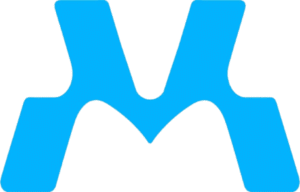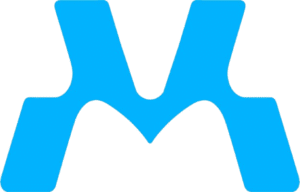Digital Marketing vs Traditional Marketing: Which One Works Better in 2025?
- Admin
- August 23, 2025
- No Comments
In 2025, the marketing world looks very different from what it did just a few years ago. With smartphones in every hand and social media dominating our daily lives, businesses are rethinking how they reach their customers. At the same time, traditional methods like TV ads, flyers, and billboards still hold their ground, especially in places where digital access isn’t as strong.
So, which one works better: digital marketing or traditional marketing?
The answer isn’t always black and white. Each approach has its strengths, and the best choice often depends on your business goals, audience, and budget. This blog will break down both strategies, compare them side by side, and help you decide which path or mix is right for your brand in today’s competitive landscape.
What is Traditional Marketing?
Traditional marketing refers to the conventional ways businesses have promoted their products and services before the digital era. These methods rely on offline channels to reach a broad audience and build brand awareness.
Common Types of Traditional Marketing
Newspaper Ads
Printed advertisements are placed in daily or weekly newspapers to reach local or national audiences. These were popular for promoting sales, events, and local businesses.
TV Commercials
Short video ads are broadcast on television channels. These are great for mass exposure but often require high production and airtime costs.
Radio Promotions
Audio advertisements aired on FM/AM radio stations. Often used for quick promotions, jingles, or event announcements.
Billboards
Large-scale advertisements are placed along roadsides or on buildings. They are effective for visibility but don’t allow precise targeting.
Flyers and Brochures
Printed materials are distributed by hand, inserted in newspapers, or displayed in stores. They’re cost-effective for local promotions and special deals.
These methods have been used for decades. Big brands like Coca-Cola, Nestlé, and even your local grocery store still rely on them. I remember how my father would receive local business flyers every Sunday. He’d go through them with his morning chai, checking out deals and discounts.
What is Digital Marketing?
Digital marketing is the promotion of products or services using the internet and other digital technologies. Unlike traditional marketing, which relies on print or broadcast media, digital marketing connects businesses with potential customers through online channels where people spend much of their time today.
Whether it’s scrolling through social media, searching on Google, or watching videos on YouTube, digital marketing allows brands to meet consumers where they are, in real-time.
Common Digital Marketing Channels
Websites
Your website is your digital storefront. It helps customers learn about your offerings, make purchases, or contact you for services.
Social Media Platforms
Platforms like Facebook, Instagram, TikTok, and LinkedIn are powerful tools for promoting products, engaging with audiences, and building community.
Search Engines (Google, Bing)
When someone types “best shoes in Lahore,” your business should show up. That’s where search engine optimization (SEO) and paid search ads come in.
. Email Marketing
Sending newsletters, promotions, or updates directly to your customers’ inboxes is a great way to build loyalty and drive repeat sales.
Online Ads (Google Ads, Facebook Ads)
You can run targeted campaigns where you only pay when someone clicks. It’s measurable and scalable.
Mobile Apps & Messaging
From branded apps to WhatsApp Business, mobile communication tools help you stay directly in touch with customers.
Video Marketing
Videos on YouTube, Reels, or Shorts grab attention quickly and are perfect for storytelling, tutorials, or product demos.
Why It Matters Today
Digital marketing gives businesses, large or small, the power to:
- Target specific audiences based on interests, location, and behavior
- Measure results in real time
- Scale campaigns with any budget
- Build long-term customer relationships
In short, digital marketing isn’t just an option in 2025, it’s a necessity.
Real example:
I once ran a small campaign on Instagram for a friend’s jewelry business. With just Rs. 1000 and some creative content, we reached over 10,000 people in Lahore. That kind of reach would be nearly impossible with printed posters or newspaper ads.
Comparing Digital and Traditional Marketing
Let’s break down the key differences:
Feature | Traditional Marketing | Digital Marketing |
Reach | Local or limited | Global and scalable |
Cost | High (TV, print ads) | Budget-friendly (start small) |
Tracking Results | Difficult to measure | Easy with real-time analytics |
User Interaction | One-way (from business to public) | Two-way (comments, messages, feedback) |
Speed | Slower (depends on printing/broadcast) | Instant publishing and editing |
Personalization | One-size-fits-all | Highly targeted and customized |
Why Digital Marketing is Leading in 2025
People Spend More Time Online
In 2025, people are glued to their phones more than ever. Whether they’re watching YouTube or scrolling through Instagram, that’s where businesses need to show up.
Even older generations like my 60-year-old uncle now watch cooking reels on Instagram instead of TV shows.
Better Return on Investment (ROI)
With digital platforms, you can run ads starting from just a few hundred rupees. You can also see how well those ads perform.
In contrast, traditional marketing is often more expensive, and you rarely know how effective it was.
Real-Time Flexibility
Printed brochures or newspaper ads can’t be changed once they’re out. But digital campaigns can be edited, paused, or updated at any time.
This kind of control saves both time and money.
You Can Target Specific Audiences
One of the biggest advantages of digital marketing over traditional methods is the ability to target your exact audience. Instead of casting a wide net and hoping the right people see your message, digital platforms let you reach specific groups based on age, gender, location, interests, online behavior, and even what they’ve searched for recently. For example, if you run a clothing store in Karachi that sells women’s fashion, you can create Facebook or Google ads that appear only to women aged 18–35 in Karachi who have shown interest in shopping or fashion trends. This level of targeting not only reduces wasted ad spend but also increases the chances of converting leads into customers
Is Traditional Marketing Still Relevant?
Yes, traditional marketing is still relevant in 2025, but its effectiveness depends on your target audience and business goals. While digital marketing dominates in terms of reach, data tracking, and cost-efficiency, traditional methods like TV commercials, newspaper ads, billboards, and flyers still play a strong role in certain contexts.
For example, if you’re targeting older audiences, rural communities, or areas with limited internet access, traditional marketing can still be very effective. It also works well for building brand credibility and creating a broad visual presence, like during political campaigns, product launches, or city-wide promotions.
However, most modern businesses are finding success by blending both strategies using traditional channels for mass exposure and digital tools for targeted, measurable growth.
- Local communities
- Older demographics
- Physical locations (e.g., billboards in busy areas)
- Events or product launches
The smartest brands in 2025 are using both digital and traditional methods. This is called integrated marketing, and it brings the best of both worlds together.
So, Which One Should You Choose?
Here’s a quick guide based on your situation:
- Small Business or Freelancer:
Start with digital. It’s cost-effective, fast, and gives you full control. - Established or Big Brand:
Use a combination. Run social media campaigns alongside outdoor ads or local promotions. - New to Marketing:
Begin with digital platforms. Create a simple Facebook or Instagram page, post consistently, and try running one ad to learn the basics.
Case Study: Local Bakery in Lahore Combines Traditional and Digital Marketing
Business: SweetCrust Bakery Lahore, Pakistan
Challenge: Increase foot traffic and orders during the wedding season
Strategy:
Sweet Crust Bakery decided to use a mix of traditional and digital marketing. They printed colorful flyers and placed banners near popular wedding halls in Lahore. At the same time, they ran targeted Instagram and Facebook ads promoting custom wedding cakes and discounts.
Results:
- Flyers and banners created immediate local awareness, especially among walk-in customers and passersby.
- Facebook ads reached 10,000+ people in Lahore within 5 days and led to a 40% increase in online cake inquiries.
- The combination helped the bakery double its bookings for wedding cakes compared to the previous year.
Conclusion:
By blending traditional visibility with digital targeting, SweetCrust was able to connect with both offline and online audiences, proving that traditional marketing is still relevant — especially when used alongside digital strategies.
Final Thoughts
It’s not about choosing digital or traditional. It’s about knowing your goals and using the right tools to reach them.
In 2025, digital marketing offers more value in terms of flexibility, speed, targeting, and budget control. It especially benefits small businesses, startups, freelancers, and anyone looking to grow online.
I’ve seen friends turn small ideas into successful brands just by learning how to post engaging Instagram content. If you’re still relying only on printed flyers or word of mouth, it might be time for a digital upgrade.
FAQs
Is traditional marketing dead in 2025?
Not at all. It still works for specific audiences and situations. But digital marketing has become more dominant because that’s where people spend their time.
Can a small business afford digital marketing?
Yes. Digital marketing is accessible for all budgets. Even free tools like social media, WhatsApp groups, or email newsletters can be very effective.
Which one gives faster results: digital or traditional?
Digital marketing usually delivers faster. You can launch an ad and see responses within hours. Traditional methods might take days or weeks.
How do I know if my digital marketing is working?
Local SEO helps your business appear in nearby Google searches. With good reviews and accurate information, you can rank higher than larger competitors in your area.
Can social media make a difference for a small business?
Platforms like Facebook, Instagram, and Google give you real-time data on how many people saw, clicked, or engaged with your ad, something traditional marketing doesn’t offer.
If you’re starting and need help with your first campaign, creating content, or understanding digital platforms, just ask. The tools are available, the audience is online, and 2025 is the perfect year to make your move.

